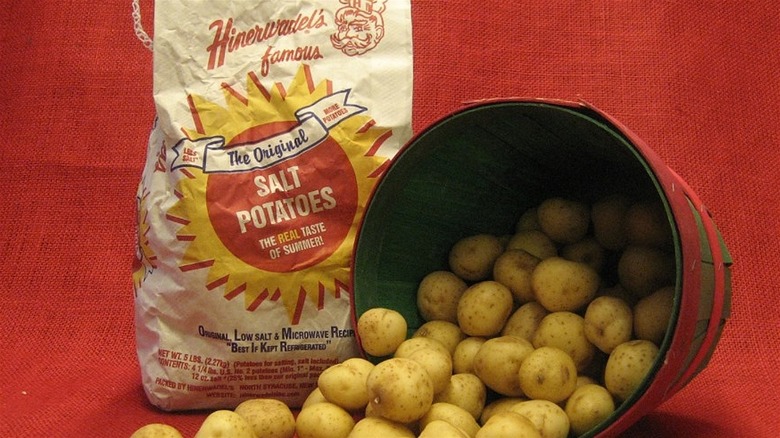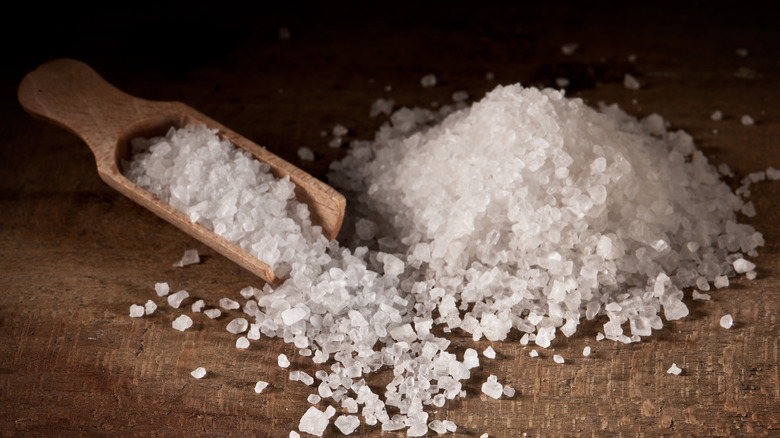What Makes Syracuse Salt Potatoes Stand Out From The Rest?
Head to a summer fair, picnic, or barbeque in Central New York and chances are you'll see people enjoying the creamy, buttery goodness of Syracuse salt potatoes, a beloved local dish that dates back to the 19th century.
Syracuse salt potatoes are known for their creamy texture and extra-flavorful taste, which is produced by boiling small unpeeled potatoes in salty water. The briny water does a couple of things to make this magic happen: As it evaporates, the salt forms a thin crust on the potato's skin that keeps too much water from getting inside, preventing sogginess. All that salt also raises the water's boiling point, making it hotter inside the potato, converting its moisture into steam. This causes the starch to cook more, producing the signature creaminess.
Although any small potato can be used, and brining can be delicious with larger potatoes, too, tan-skinned new potatoes are traditional, as these summer-harvested baby spuds are more tender and moist. They're cooked in a standard ratio of 1 pound of salt for 4 pounds of potatoes, but that does vary in different recipes. Local business Hinerwadel's, which helped make Syracuse salt potatoes popular more than 100 years ago, still sells bags of the raw potatoes and put its recipe on them. Hinerwadel's suggests boiling 4 ¼ pounds of No. 2 potatoes (which range from 1 to 2 ¼ inches in size) in two quarts of water with 12 ounces of salt for about 20 minutes.
Syracuse salt potatoes' history and legacy
Salt potatoes were a creation of Irish immigrants who worked in Syracuse's salt industry in the 1800s. More than 90% of salt in the U.S. came from this region at the time, earning Syracuse the nickname "Salt City," thanks to abundant salt springs on the shores of Onondaga Lake. Briny water from the springs was put in large outdoor containers that left salt crystals behind as the water evaporated. It was also boiled in large kettles, resulting in finer salt after the water was gone. The immigrants started bringing small potatoes for their lunch and tossing them into the vats of salty boiling water.
Residents in working-class neighborhoods began eating salt potatoes, and city taverns started serving them with melted butter (which makes everything better, even store-bought waffle mix). Businessman John Hinerwadel started selling them at his locally famous clambakes around 1904, increasing their popularity. Salt potatoes remain a regional favorite to this day. Hinerwadel's started selling 5-pound bags of uncooked potatoes with a 12-ounce salt packet in 1981, and even though the restaurant closed in 2018 after more than 100 years, Hinerwadel's potato and salt bags are still sold online and in local stores.
In 2021, Syracuse salt potatoes were honored with their own historic marker on the grounds of the Salt Museum at Onondaga Lake. They are celebrated as a historically significant regional food, and we have workers to thank for it — just like another American favorite, West Virginia miners' pepperoni rolls.


